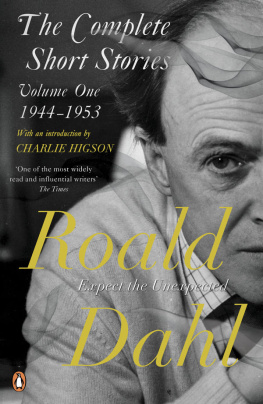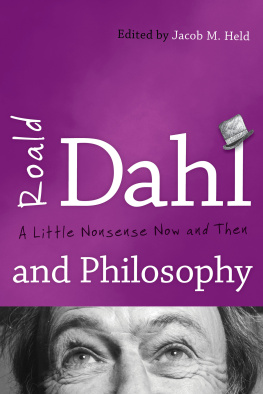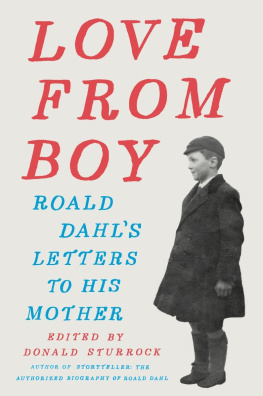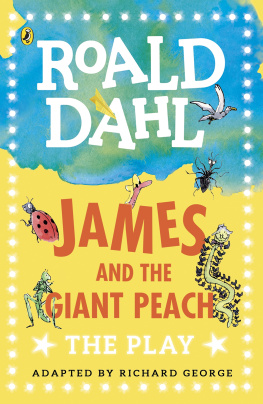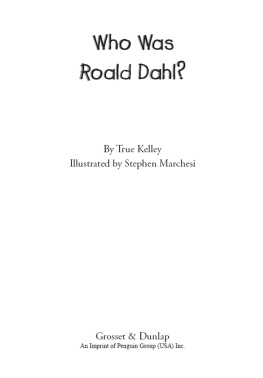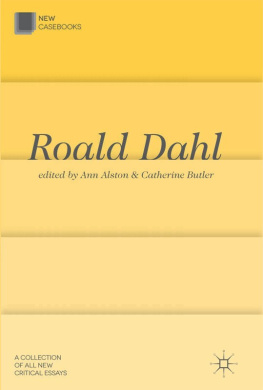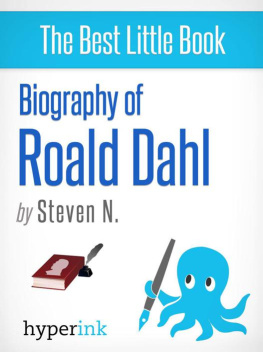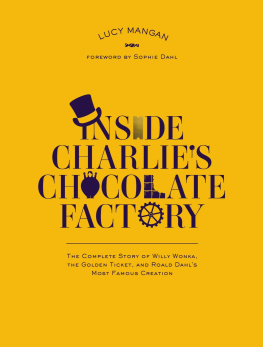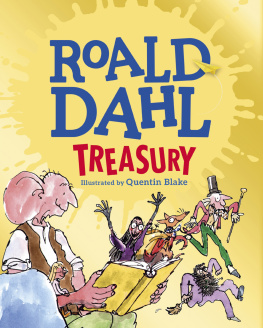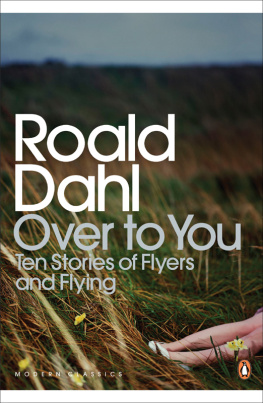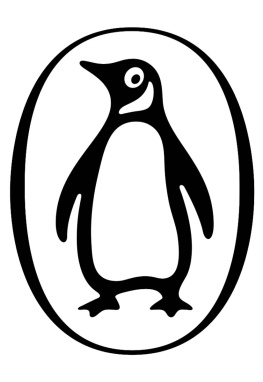Dahl Roald - The complete short stories. Volume one 1: 1944-1953
Here you can read online Dahl Roald - The complete short stories. Volume one 1: 1944-1953 full text of the book (entire story) in english for free. Download pdf and epub, get meaning, cover and reviews about this ebook. City: London, year: 2013, publisher: Penguin Books Ltd, genre: Art. Description of the work, (preface) as well as reviews are available. Best literature library LitArk.com created for fans of good reading and offers a wide selection of genres:
Romance novel
Science fiction
Adventure
Detective
Science
History
Home and family
Prose
Art
Politics
Computer
Non-fiction
Religion
Business
Children
Humor
Choose a favorite category and find really read worthwhile books. Enjoy immersion in the world of imagination, feel the emotions of the characters or learn something new for yourself, make an fascinating discovery.
- Book:The complete short stories. Volume one 1: 1944-1953
- Author:
- Publisher:Penguin Books Ltd
- Genre:
- Year:2013
- City:London
- Rating:3 / 5
- Favourites:Add to favourites
- Your mark:
- 60
- 1
- 2
- 3
- 4
- 5
The complete short stories. Volume one 1: 1944-1953: summary, description and annotation
We offer to read an annotation, description, summary or preface (depends on what the author of the book "The complete short stories. Volume one 1: 1944-1953" wrote himself). If you haven't found the necessary information about the book — write in the comments, we will try to find it.
Dahl Roald: author's other books
Who wrote The complete short stories. Volume one 1: 1944-1953? Find out the surname, the name of the author of the book and a list of all author's works by series.
The complete short stories. Volume one 1: 1944-1953 — read online for free the complete book (whole text) full work
Below is the text of the book, divided by pages. System saving the place of the last page read, allows you to conveniently read the book "The complete short stories. Volume one 1: 1944-1953" online for free, without having to search again every time where you left off. Put a bookmark, and you can go to the page where you finished reading at any time.
Font size:
Interval:
Bookmark:


PENGUIN BOOKS
Roald Dahl is best known for his mischievous, wildly inventive stories for children. But throughout his life he was also a prolific and acclaimed writer of stories for adults. These sinister, surprising tales continue to entertain, amuse and shock generations of readers even today.
I ought to warn you, if you havent read any of
my stories, that you may be a little disturbed by
some of the things that happen in them
I remember the first time I saw Roald Dahl. It was 1979, and there on my television was a bald man in his sixties, sitting in an armchair by a roaring fire, with a tray across his lap, introducing a new series based on some of the short stories he had written. Id seen Willy Wonka and the Chocolate Factory. Id read the book that it was based on. Id also read some of his adult stories. But I hadnt really made the connection that the same person was behind them all. Roald Dahl was not yet the reliable brand name that it is today, so familiar that we can look at it without thinking what an odd name it is (unless, I suppose, youre Norwegian). Nowadays everybody knows who Roald Dahl is one of the most popular childrens writers in the world but I am from the generation who first became aware of him sitting there in his cardigan introducing the TV series Tales of the Unexpected.
For a while there were two Roald Dahls in peoples consciousness. One the Tales of the Unexpected Dahl who wrote slightly sinister, blackly humorous adult stories with a sting in the tail. The other the Willy Wonka Dahl who wrote slightly sinister, blackly humorous childrens stories illustrated by Quentin Blake. And back in 1979 the TV Dahl, the Tales of the Unexpected Dahl, took over for a while. After all, he had yet to write many of his most popular kids books, like The Twits, TheBFG, Matilda and The Witches. But there is a third Roald Dahl, and that is the one you will find in these pages quite simply the master of the short-story form because there is so much more to these tales than the unexpected, a label that has perhaps been too often applied to his adult work and which gives too narrow a view of its appeal. If every story consisted of nothing more than a twist we would read them once, perhaps skipping through to the big reveal, and then forget all about them. But you never forget a Dahl short story. This volume starts with ones based on his experiences as a fighter pilot in the Second World War and ends with ones of country life. In between there is horror, comedy, science fiction, satire and sex. Yes, many of them do end with a final drop of acid, but the pleasure goes far beyond the punchline.
Dahls introduction to the very first Tales of the Unexpected is, like his stories, instantly captivating, short, sharp, dry and to the point, and it gives an excellent insight into his approach to writing:
When Im writing a short story Im haunted by the thought that Ive got to hold the readers attention for literally every second, otherwise Im dead.
That is a sentence that should be carved into the forehead of anybody starting out as a writer. In fact it should be carved into the foreheads of many established literary novelists and critics who believe it is the job of the reader, not the writer, to make the effort in a story. Each of the stories in this collection draws you in and plays with you, even though, on the surface, nothing much seems to be happening. They are written in a deceptively straightforward style. They may be about warfare and madness, of cows suckling snakes, of husbands contemplating killing their wives, and wives calmly murdering their husbands, of bullying, revenge and mutilation indeed, many of them verge on horror but the writing never strays into overblown histrionics and Dahl avoids any Gothic flourishes. There are no thunderstorms and old dark houses. The stories mostly play out in sunlight. But it is a pitiless bright light that exposes everything it touches. Dahls style is always understated and matter-of-fact, which is what gives it its cold, hard kick. It is the epitome of the British stiff upper lip: a calm, polite exterior that thinly masks the seething turmoil and suppressed violence underneath. This idea is perfectly depicted in this description of an airman from the story Madame Rosette.
Stuffy noticed that the Stag was being polite. There was always trouble for somebody when he was like that. Back in the squadron, when he was leading a flight, when they sighted the enemy and when there was going to be a battle, the Stag never gave an order without saying Please and he never received a message without saying Thank you. He was saying Thank you now to Abdul.
No matter how normal things might appear on the surface, we somehow know that its not going to end well. Dahl will shine his light on to the secrets and lies and pathetic aspirations of his perfectly drawn and desperate characters. They are brutal, these stories, and yet you finish reading each one with a smile, or maybe even a hollow laugh, certainly a shiver of gratification, because the conclusion always seems so right. Justice has been served. It is not a civilized Christian justice at work, though. It is something older and darker, the same justice that runs through Dahls childrens books. It is the child-torturing justice of Willy Wonka, or the aunt-crushing justice of James and the Giant Peach.
The stories in this book are arranged chronologically, in the order they were first published, and what is extraordinary is just how polished the early ones are, despite the fact that Dahl had shown no real literary skills at school and no real interest in writing. You might expect to find a writer feeling his way, grasping for his themes and even experimenting with his style, but no, right from the off the writing is amazingly assured. Again, in his introduction to Tales of the Unexpected from 1979, Dahl gives an insight into the care he took over his stories:
The one youre going to see now is the first of a series based on stories that have taken me thirty-five years to write. I find them difficult to do well so I work slowly, about two a year.
In Lucky Break Dahl tells how it all came about when he was approached by the writer C. S. Forester famous for his Hornblower adventure novels in Washington during the war. Dahl was working as a British cultural attach, having been wounded in Africa, and Forester needed material for stories to publish in American magazines. Too old to fight, he was, instead, a propagandist and was writing pieces sympathetic to the British to make sure we received as much American support as possible. He asked Dahl to jot down some notes for him about his experiences of being shot down over Libya. Dahl duly obliged, but when he got Dahls notes Forester wrote back to him, You were meant to give me notes. Im bowled over. Your piece is marvellous. It is the work of a gifted writer. I didnt touch a word of it.
The piece was duly published under Dahls name and he never looked back. Overnight he had become a writer. (That story, later rewritten, appears in this volume as A Piece of Cake.) When asking for notes, Forester gave Dahl a piece of advice that really stuck with him:
Font size:
Interval:
Bookmark:
Similar books «The complete short stories. Volume one 1: 1944-1953»
Look at similar books to The complete short stories. Volume one 1: 1944-1953. We have selected literature similar in name and meaning in the hope of providing readers with more options to find new, interesting, not yet read works.
Discussion, reviews of the book The complete short stories. Volume one 1: 1944-1953 and just readers' own opinions. Leave your comments, write what you think about the work, its meaning or the main characters. Specify what exactly you liked and what you didn't like, and why you think so.

